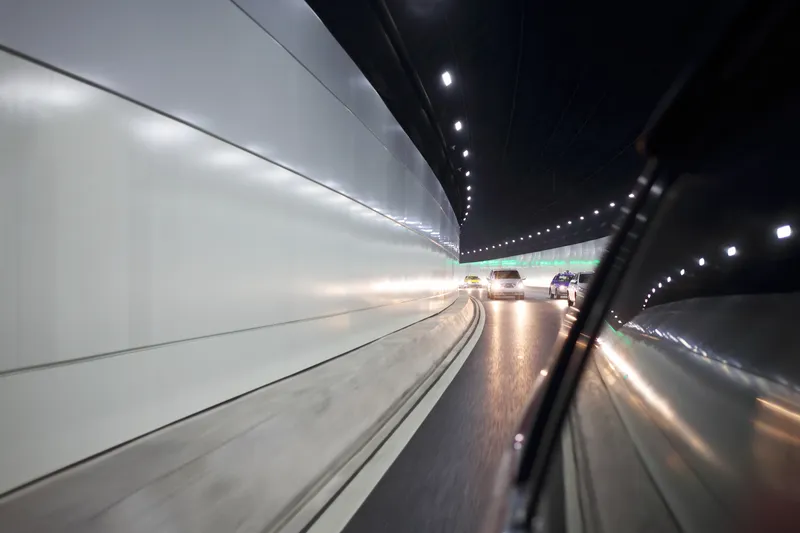Following the successful rollout of average speed enforcement systems on four zones of Victoria’s Peninsula Link and up to eight zones of the Hume Highway, together with 37 sites in New South Wales, Redflex has now implemented next generation average speed enforcement systems on Port Wakefield Road and Dukes Highway in South Australia.
Two RedflexPoint-to-point cameras are now providing average speed enforcement on two major carriageways leading into the city of Adelaide; in both directions on the 13 kil
July 7, 2014
Read time: 3 mins
Following the successful rollout of average speed enforcement systems on four zones of Victoria’s Peninsula Link and up to eight zones of the Hume Highway, together with 37 sites in New South Wales, 112 Redflex has now implemented next generation average speed enforcement systems on Port Wakefield Road and Dukes Highway in South Australia.
Two RedflexPoint-to-point cameras are now providing average speed enforcement on two major carriageways leading into the city of Adelaide; in both directions on the 13 kilometre stretch of the two-lane Dukes Highway between Coonaplyn and Kiki, with a further two on 51 kilometres of the dual carriageway Port Wakefield Road between Two Wells and Port Wakefield.
The RedflexPoint-to-point average speed enforcement system uses high repetition digital camera technology in conjunction with RedflexExpress, a proprietary average speed enforcement engine to measure average speed over a specified distance. Vehicles are identified when entering and leaving the enforcement section and its average speed is calculated on the time interval between these two points. The system also provides spot speed enforcement at a single location.
The cameras installed on Dukes Highway are unique in that not only do they monitor traffic in both directions on the two-lane road; they are also configured to capture images of drivers who cross to the other side of the road in an effort to evade detection.
South Australia’s latest Road Traffic (Miscellaneous) Variation Regulations 2013, which took effect on 1 January 2014, classify the RedflexPoint-to-point cameras system, linked to and used in conjunction with an induction loop vehicle detector as the only approved average speed system, as well as defining changes to the legislation relating to the use of average speed cameras in the state.
In the last five years, 17 people have died on the Dukes Highway and 12 people have lost their lives on Port Wakefield Road. Minister for Road Safety, Tony Piccolo stated that the average speed safety cameras will help reduce the average travel speed by promoting road length speed limit compliance. “International research has shown 50 per cent reductions in fatal and serious crashes after average speed safety cameras were installed,” he said.
A spokesman for Safer Vehicles and Technologies, Department of Planning, Transport and Infrastructure comments: “A big thank you to everyone in Redflex who has assisted us with the systems and through every stage of the project”.
Comments Ricardo Fiusco, Redflex CEO: “RedflexPoint-to-point has proved highly successful on average and spot speed enforcement projects in Victoria, New South Wales and most recently South Australia. With 122 safety cameras operating in South Australia alone, we are proud that Redflex continues to be the preferred choice for average speed enforcement systems in Australia.
Two RedflexPoint-to-point cameras are now providing average speed enforcement on two major carriageways leading into the city of Adelaide; in both directions on the 13 kilometre stretch of the two-lane Dukes Highway between Coonaplyn and Kiki, with a further two on 51 kilometres of the dual carriageway Port Wakefield Road between Two Wells and Port Wakefield.
The RedflexPoint-to-point average speed enforcement system uses high repetition digital camera technology in conjunction with RedflexExpress, a proprietary average speed enforcement engine to measure average speed over a specified distance. Vehicles are identified when entering and leaving the enforcement section and its average speed is calculated on the time interval between these two points. The system also provides spot speed enforcement at a single location.
The cameras installed on Dukes Highway are unique in that not only do they monitor traffic in both directions on the two-lane road; they are also configured to capture images of drivers who cross to the other side of the road in an effort to evade detection.
South Australia’s latest Road Traffic (Miscellaneous) Variation Regulations 2013, which took effect on 1 January 2014, classify the RedflexPoint-to-point cameras system, linked to and used in conjunction with an induction loop vehicle detector as the only approved average speed system, as well as defining changes to the legislation relating to the use of average speed cameras in the state.
In the last five years, 17 people have died on the Dukes Highway and 12 people have lost their lives on Port Wakefield Road. Minister for Road Safety, Tony Piccolo stated that the average speed safety cameras will help reduce the average travel speed by promoting road length speed limit compliance. “International research has shown 50 per cent reductions in fatal and serious crashes after average speed safety cameras were installed,” he said.
A spokesman for Safer Vehicles and Technologies, Department of Planning, Transport and Infrastructure comments: “A big thank you to everyone in Redflex who has assisted us with the systems and through every stage of the project”.
Comments Ricardo Fiusco, Redflex CEO: “RedflexPoint-to-point has proved highly successful on average and spot speed enforcement projects in Victoria, New South Wales and most recently South Australia. With 122 safety cameras operating in South Australia alone, we are proud that Redflex continues to be the preferred choice for average speed enforcement systems in Australia.









